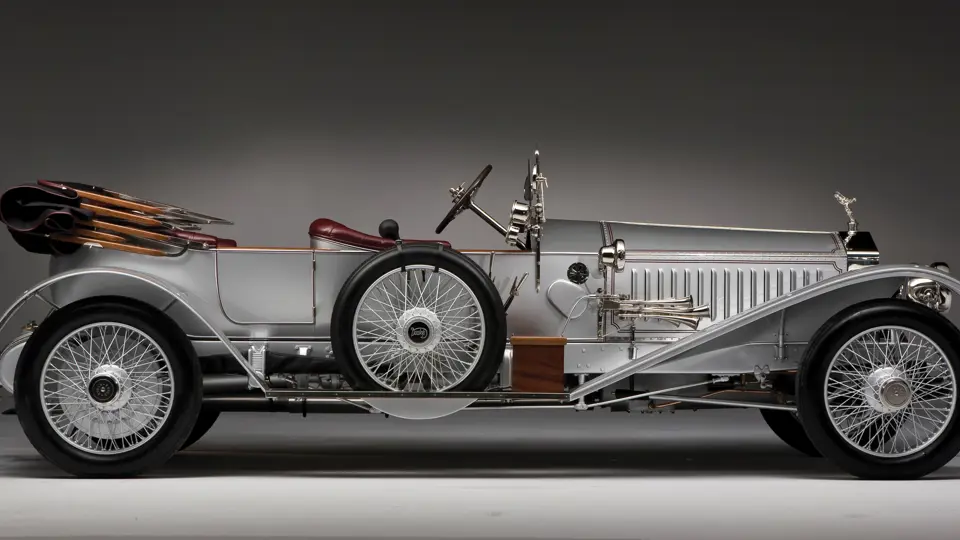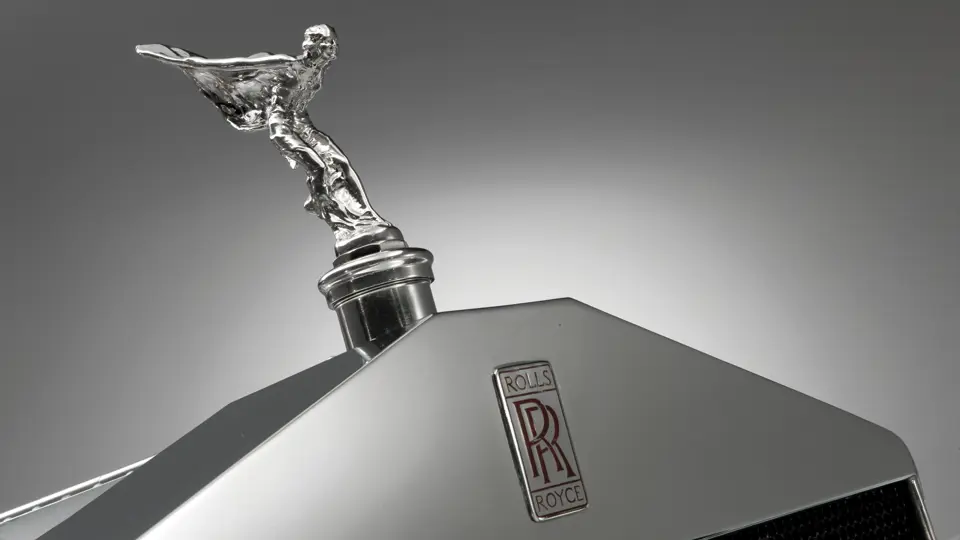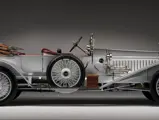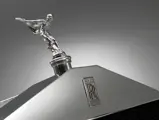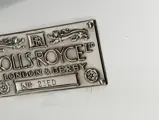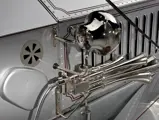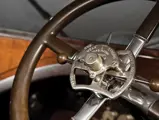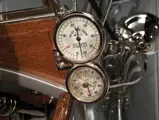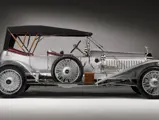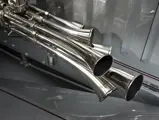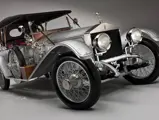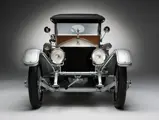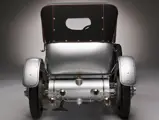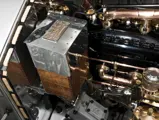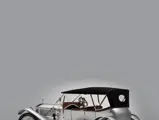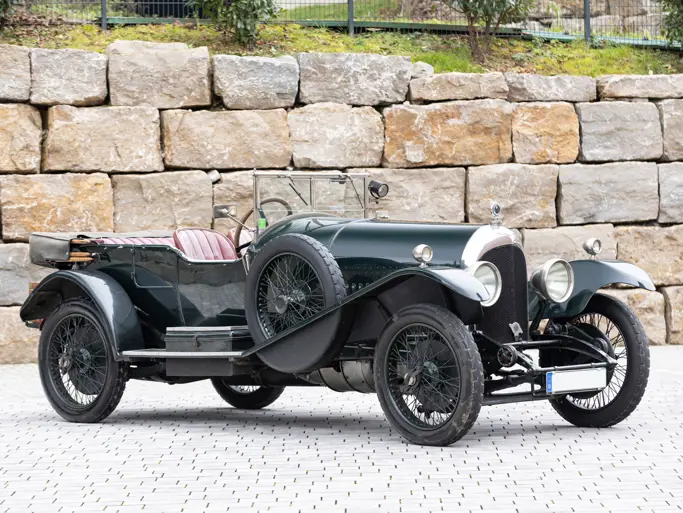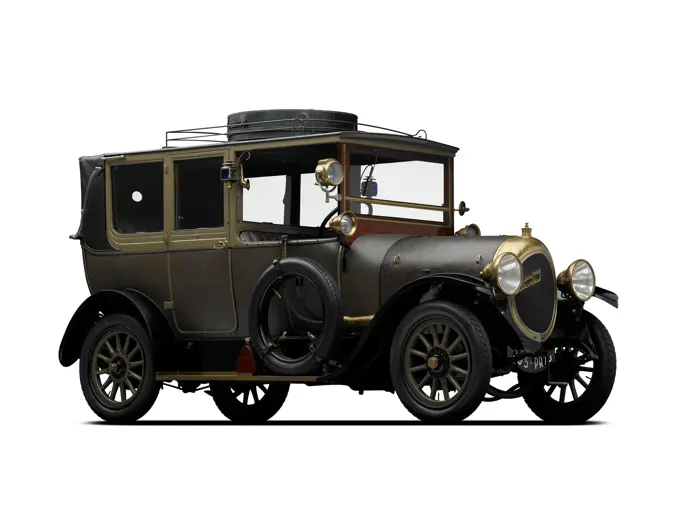40/50 hp, 7,428 cc L-head inline six-cylinder engine, four-speed manual transmission, solid front axle with semi-elliptic leaf springs, live rear axle with cantilever leaf-spring platform suspension, and rear-wheel mechanical drum brakes. Wheelbase: 143 in.
Sir Frederick Henry Royce was embarking on largely uncharted territory when he set out to design a six-cylinder engine in 1906. In Britain, only Napier espoused the concept, and the vitality of longer crankshafts was of concern. Royce went back to basics and placed two sets of three cylinders on a common crankcase, which set back-to-back so that the third and fourth pistons rose and fell together. Pressure lubrication was a forward-looking feature.
Production began in 1907, the most famous of the genre being a silver Barker-bodied tourer that was built for Managing Director Claude Johnson. Christened “Silver Ghost,” its name was later appropriated for the entire 19-year model run of what was officially called the 40/50 HP, from its horsepower rating. Autocar opined on its ghost-like behavior, “At whatever speed the car is being driven on its direct third there is no engine as far as sensation goes, nor are one’s auditory nerves troubled…by a fuller sound than emanates from an eight-day clock.”
Johnson’s Silver Ghost took part in the 2,000-mile Scottish Reliability Trial, winning a Gold Medal. He then subjected it to a further extended test, covering 15,000 miles in repeated London-Glasgow journeys, after which it was disassembled and examined for wear. All parts were found to be within tolerances, exceptional for that stage in the development of the motor car. The car still exists, now restored, and it is estimated that it has covered nearly 600,000 miles.
The legendary London-Edinburgh model resulted from a 1911 challenge, again by archrival Napier. Napier’s distributor, Selwyn Francis Edge, entered a 65-horsepower car in an RAC-observed run from London to Edinburgh and drove entirely in high gear. Rising to the challenge, Rolls-Royce responded with a nearly standard Silver Ghost chassis clad in attractive, lightweight tourer bodywork. Higher compression and a larger carburetor were the only mechanical modifications made.
The Rolls easily outshone the Napier on fuel consumption, and in a timed run at the Brooklands track, it bested its rival, with 78.26 to 76.42 mph. It was driven by Ernest Hives, who would later become Rolls-Royce’s chief engineer. The same chassis, with a single-seat body and high ratio axle, was clocked at 101.8 mph in the flying mile at Brooklands the following year. The fame of its achievements and the aesthetics of the close-coupled tourer body resulted in production of a small number of similar models in ensuing years. Not surprisingly, the London-Edinburgh style has become a favorite with collectors.
The car shown here, a genuine London-Edinburgh chassis, was ordered by the British Admiralty on February 21, 1915, and it was delivered on April 28. Silver Ghosts were frequently used by His Majesty’s forces during World War I as staff cars, supply vehicles and, when appropriately clad, armored cars. Chassis 23ED was eventually shipped to the United States through importer R.W. Schuette. It was discovered by prominent Ohio collector and Rolls-Royce enthusiast Joe Loecy in the 1970s, and it remained in the same family for over 30 years.
A restoration was planned over the years, and appropriate replacements for missing parts were found or remanufactured to exacting original specifications. In particular, the London-Edinburgh Tourer body, in the correct original design and style created by Holmes, of Derby, was supplied by the British coachbuilders Crailville Ltd., of Southall, Middlesex. Established in 1975, Crailville Ltd. specializes in the construction of period-correct bodies for classic cars, as well as the design and fabricating of custom coachwork for modern automobiles. Crailville is the first of very few restorers accepted into the Guild of Master Craftsmen, and they have produced bodies and restorations that have won awards at the Pebble Beach Concours d’Elegance.
The full restoration of 23ED began in earnest in 2007, when the car was subjected to a complete mechanical rebuild, including engine, transmission, axles, and chassis. A new stainless steel exhaust system has been fitted, as well as an electronic overdrive for effortless touring. Many components from the original chassis and driveline were lost or used for other projects over the years, but correct replacements, even if by number but not originally delivered with the car, were located, numbered, and dated correctly for the car, restored, and installed. The end result is that the finished product is as close to the appearance of the original as possible.
The body, in the close-coupled London-Edinburgh style, has the delightful flying wings of its famous progenitor. It is finished in archetypal silver, which is nicely contrasted by the leather interior. A handsome canvas top is fitted for motoring on inclement days. Appropriate accessories include an Elliott speedometer, mirrors, and electric side-lamps and headlamps. Everything is exquisitely detailed, and the car is road-tested and ready to show or tour.
This is a wonderful example of one of the most sought-after “parallel bonnet” Rolls-Royces.

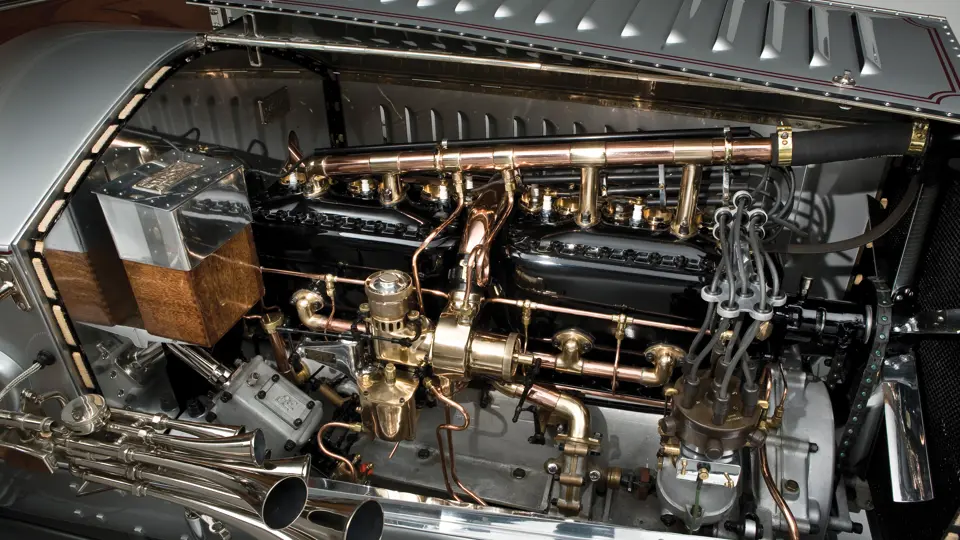


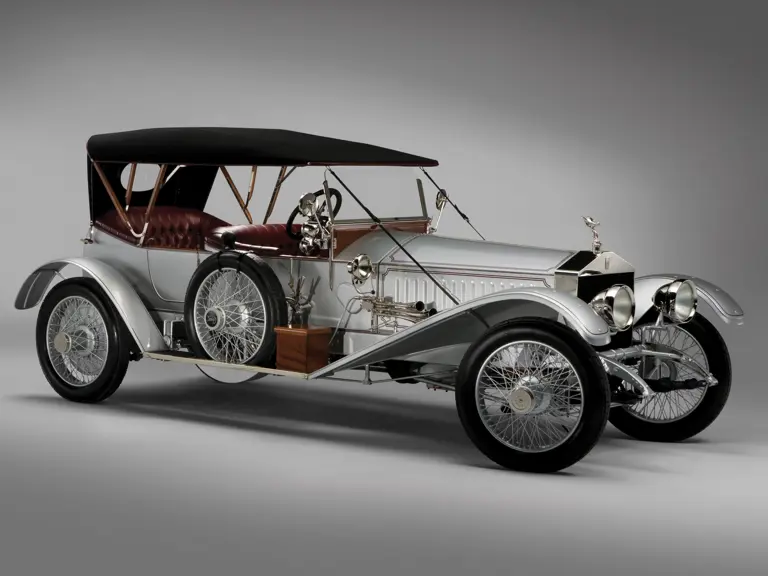
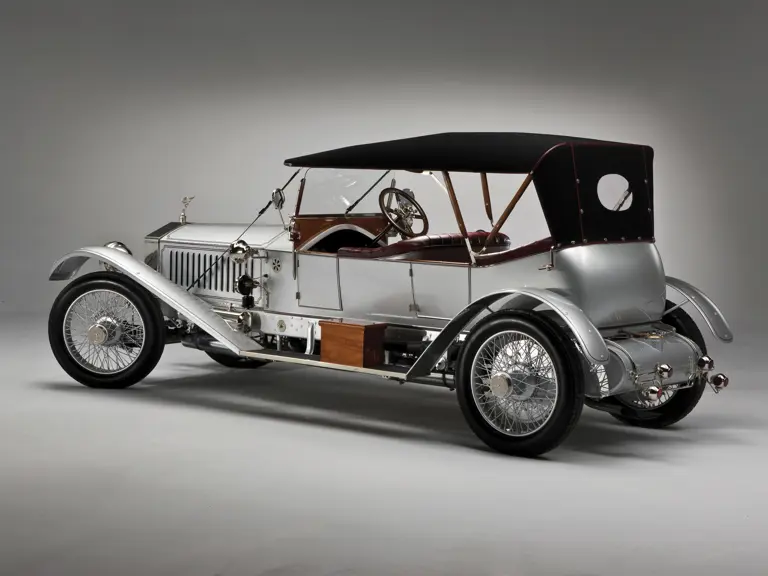
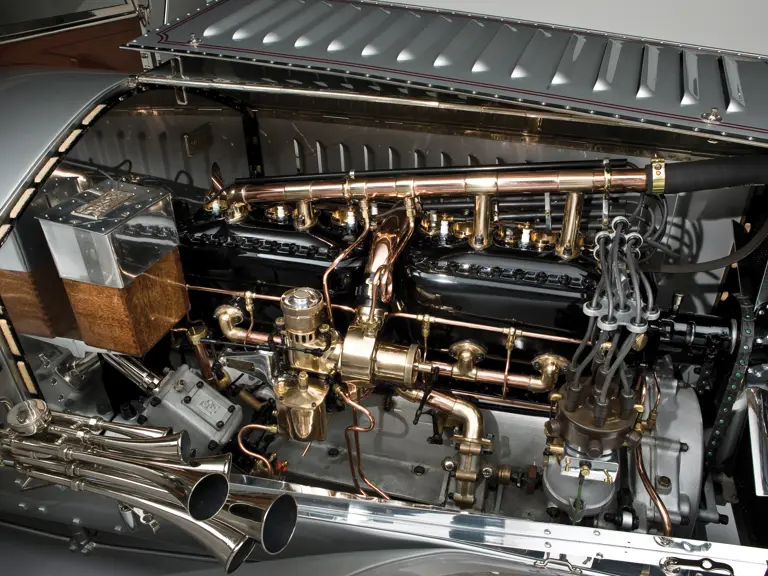
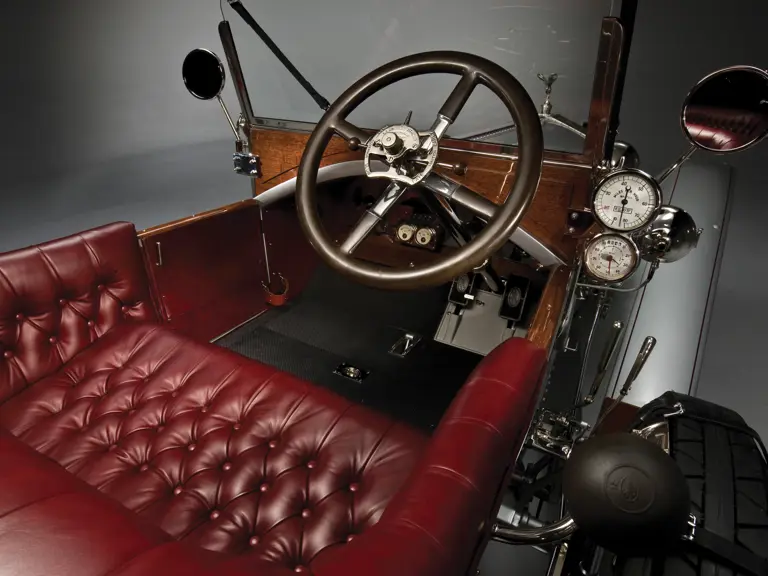
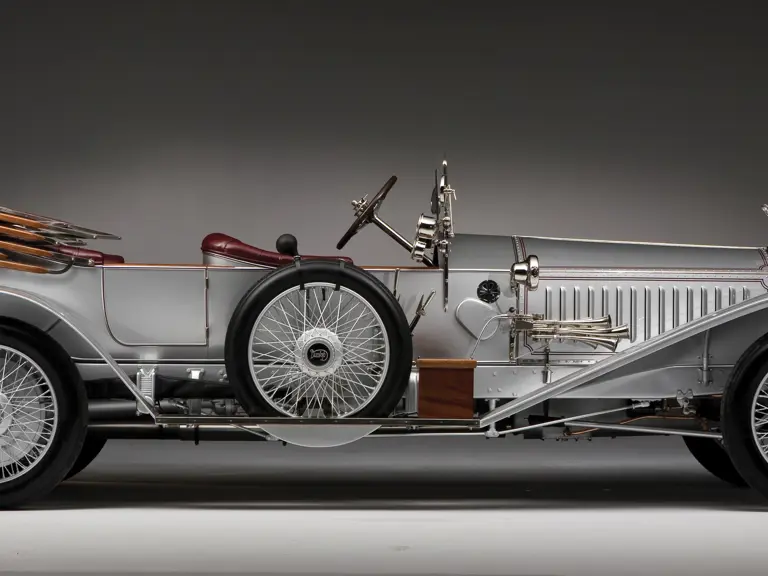

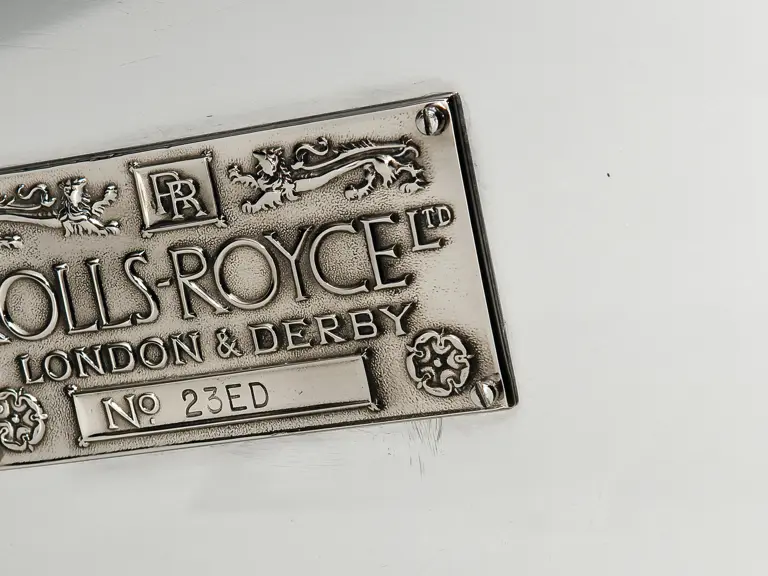

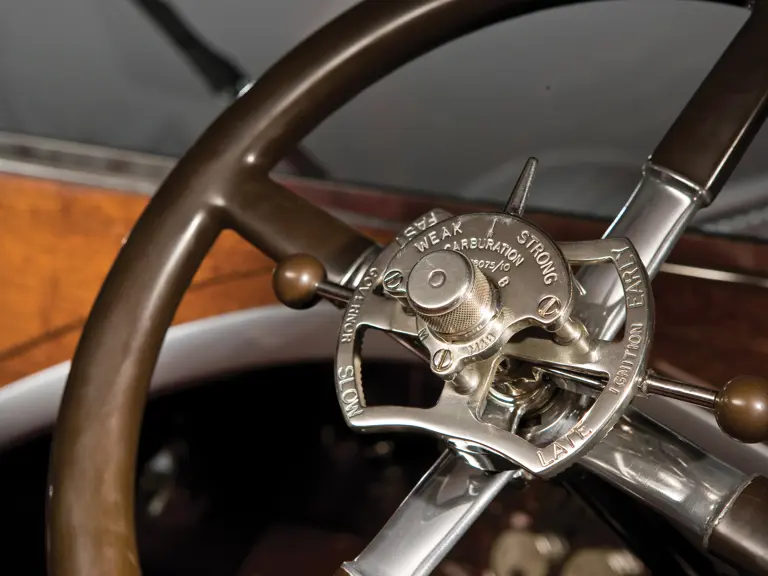
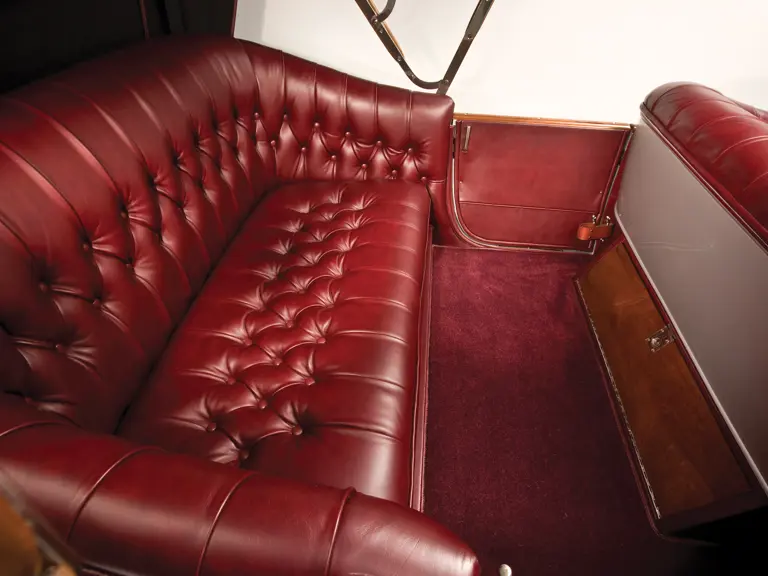
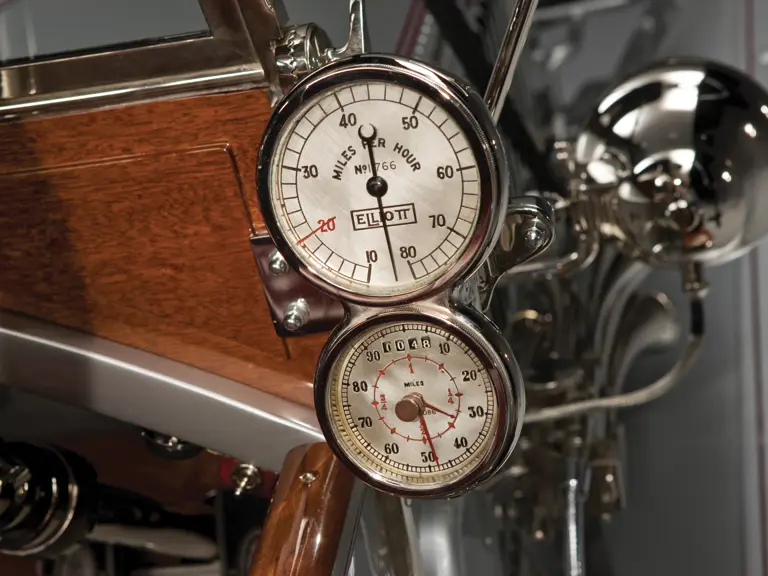
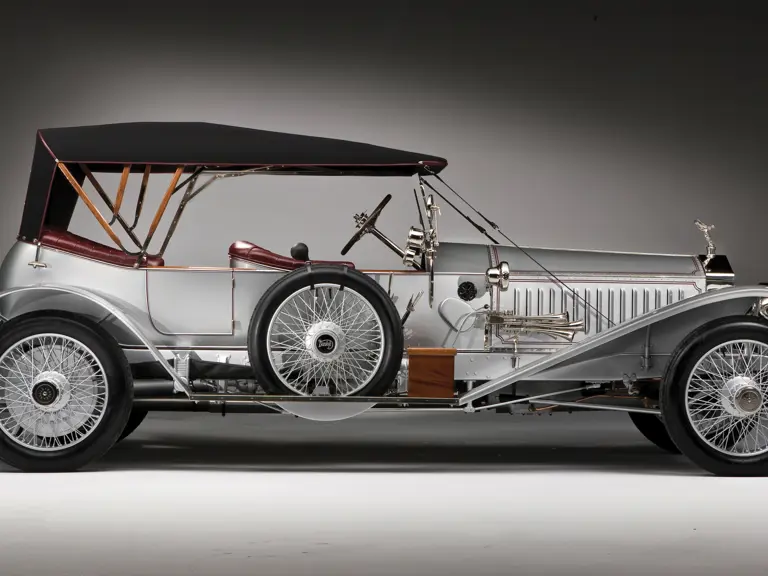
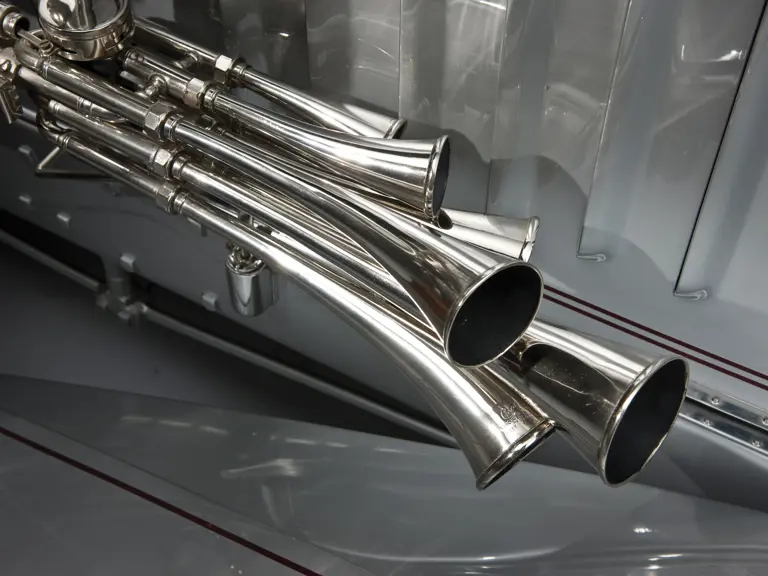
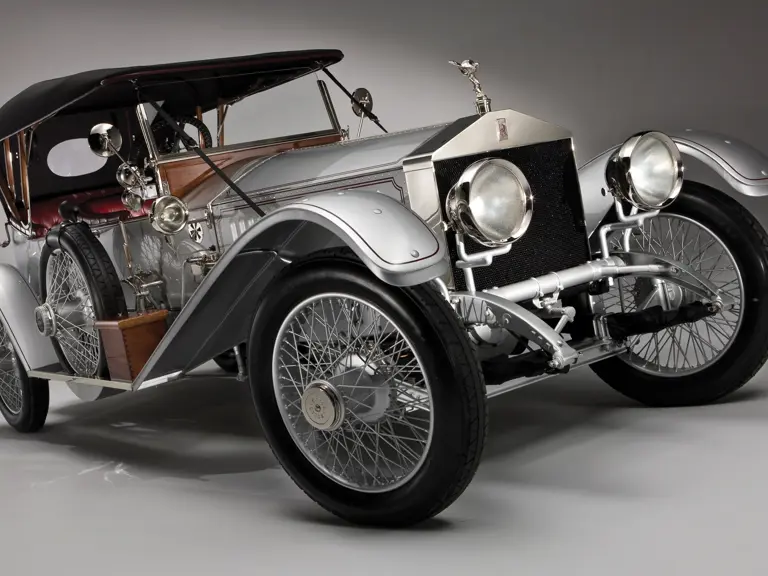
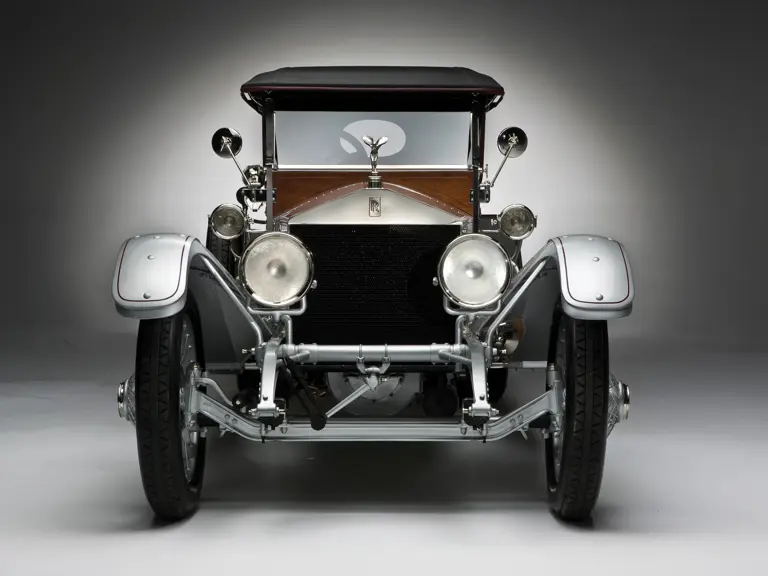
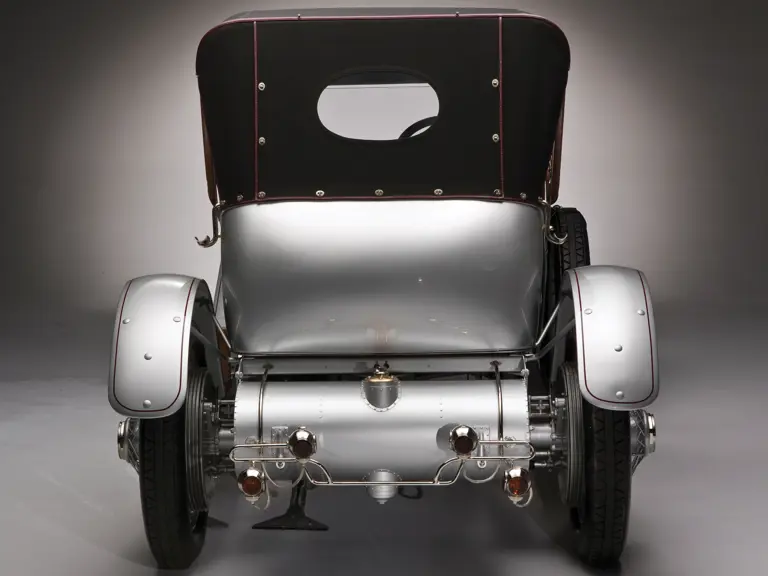
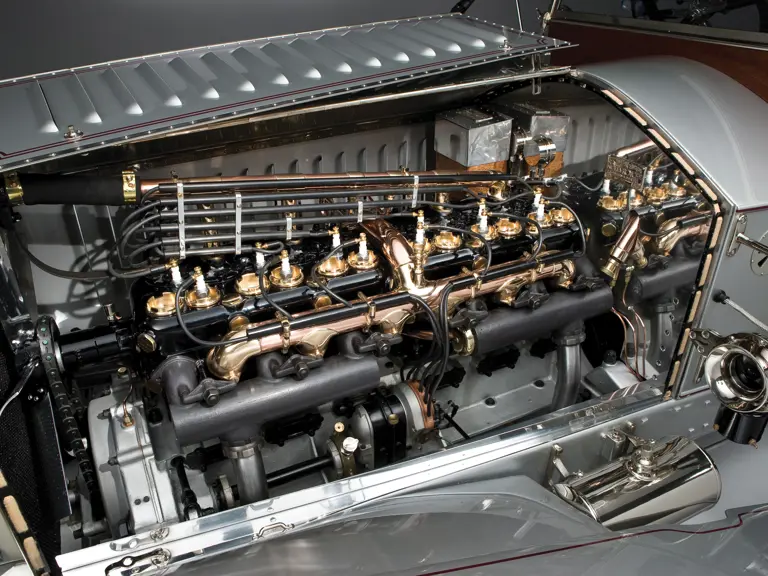

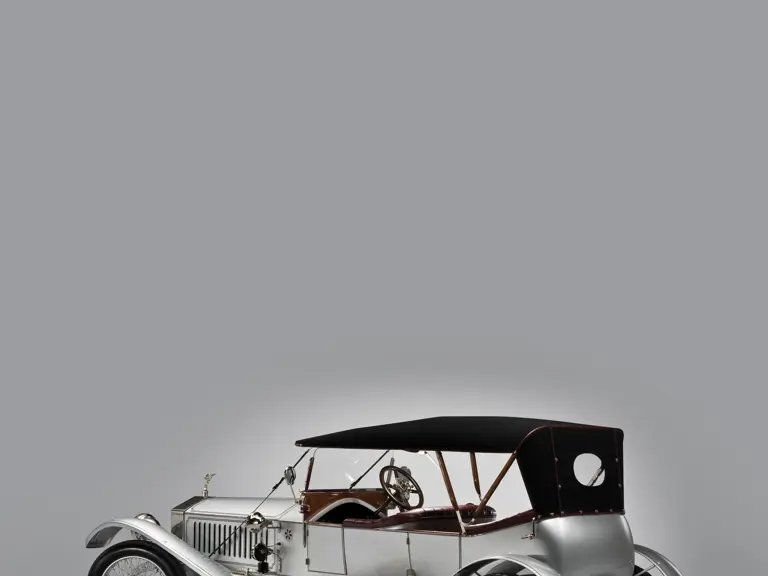
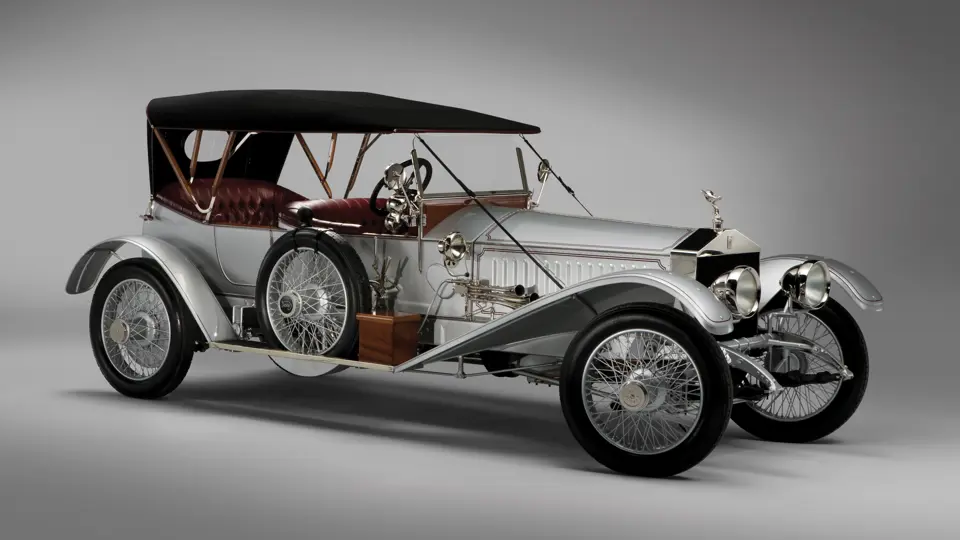
 | Monterey, California
| Monterey, California
